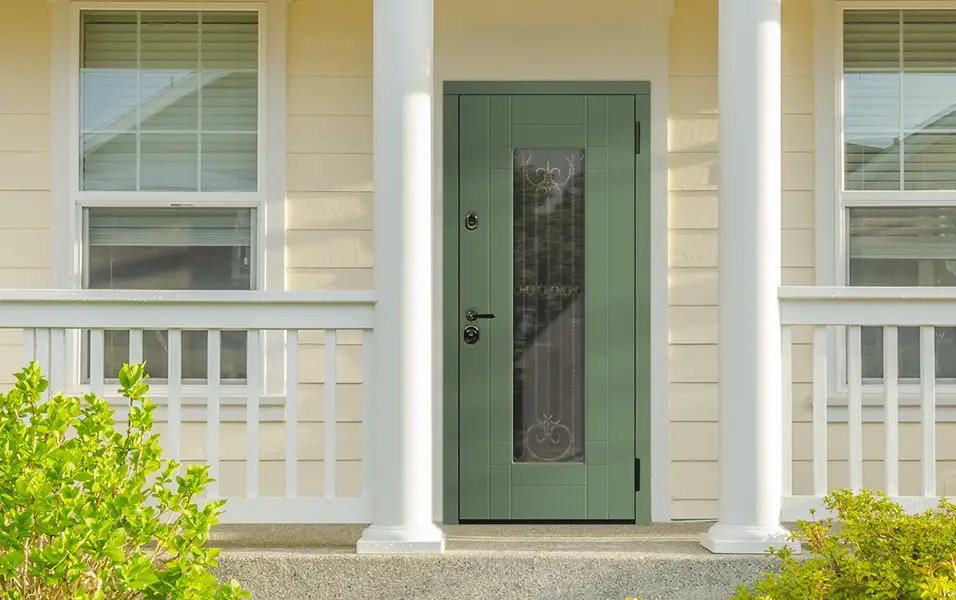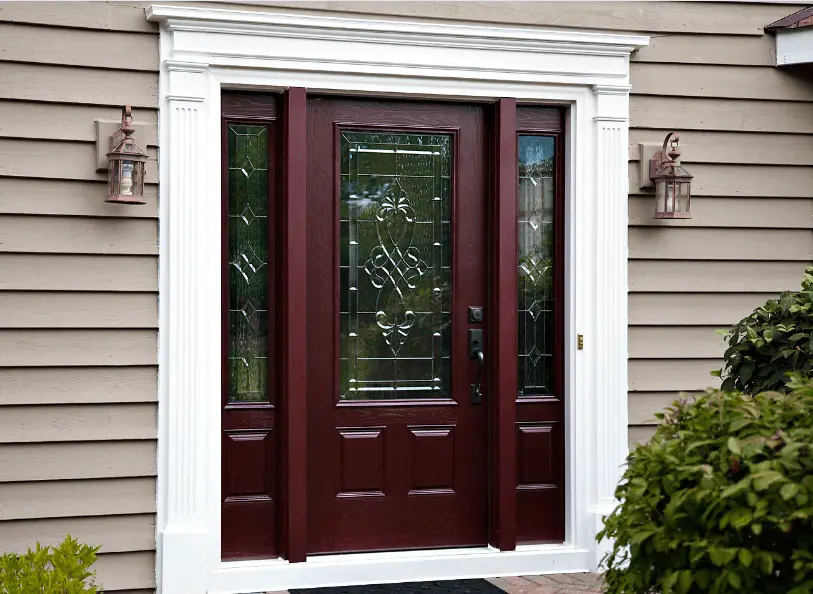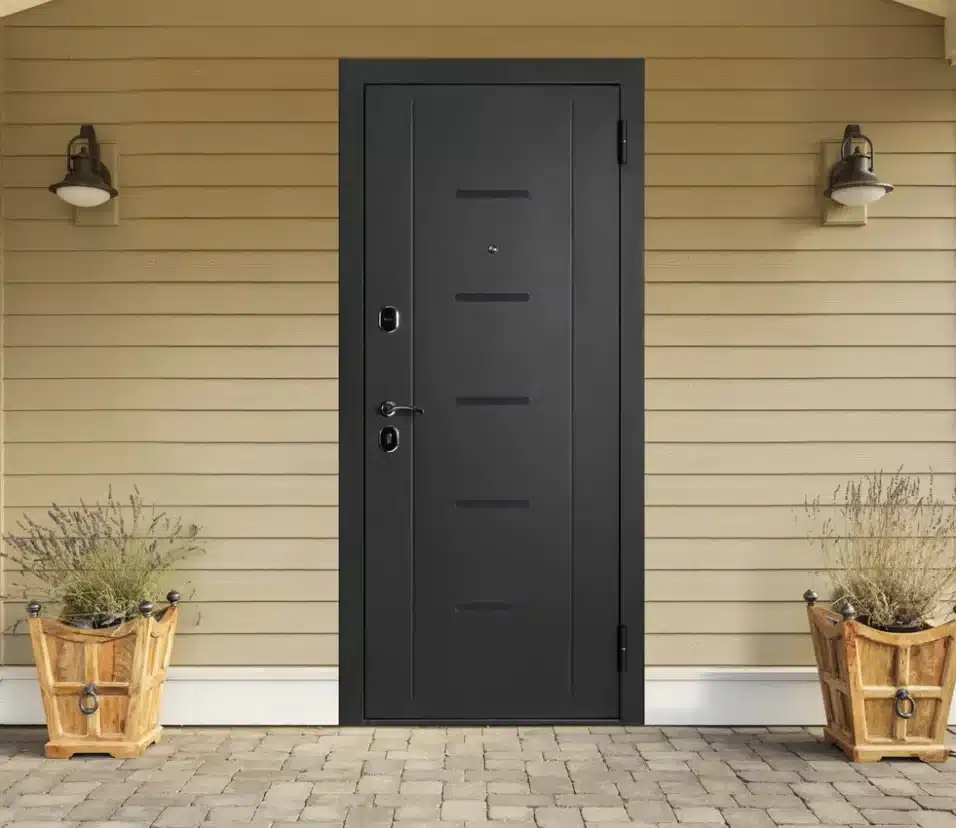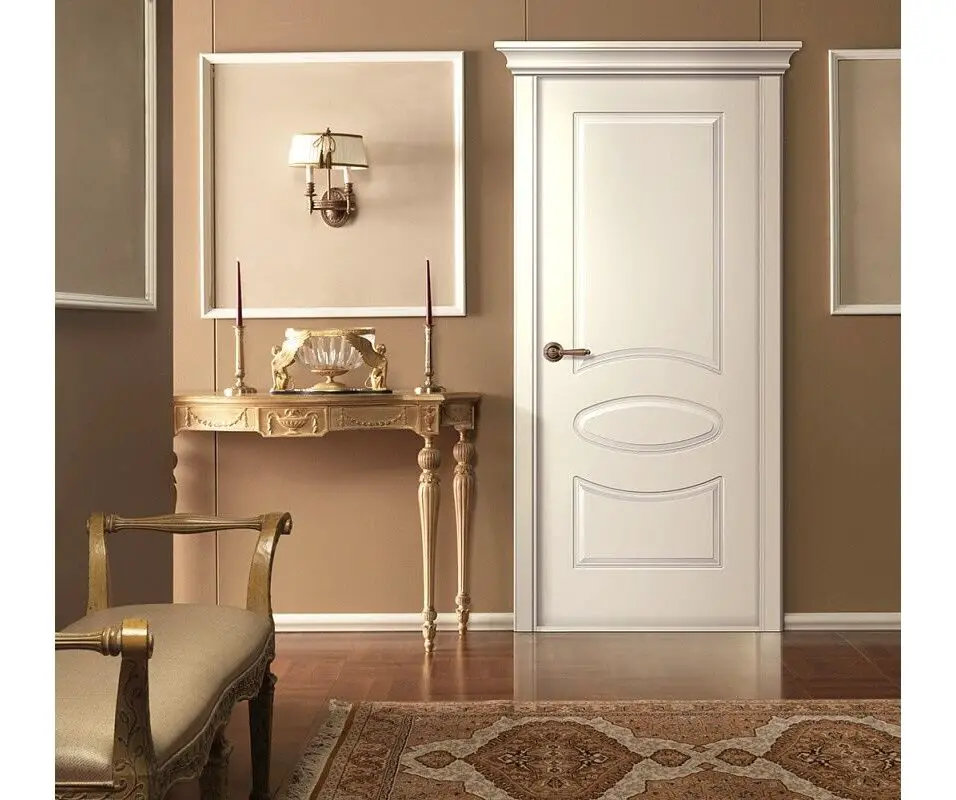How To Measure Exterior Door Size For Replacement
Introduction
How To Measure Exterior Door Size For Replacement: When considering the replacement of an exterior door, accurate measurements are the foundational steps that pave the way for a successful and seamless installation. Measuring an exterior door size for replacement requires precision and attention to detail to ensure that the new door fits snugly, functions correctly, and enhances both the aesthetics and functionality of your space.
In this process, measuring width, height, and thickness are fundamental. However, it’s not just about obtaining dimensions; it’s about obtaining the right dimensions. Carefully measuring the width of the door frame at various points—top, middle, and bottom—and subsequently selecting the smallest width measurement guarantees that the replacement door will slide effortlessly into the existing space. Similarly, measuring the height on both sides and the center of the frame and choosing the shortest height measurement ensures that the new door aligns seamlessly with the frame and its surroundings.
It’s essential to consider factors beyond mere numbers. Elements like the swing direction of the door, the orientation of the hand, and even the threshold height should be accounted for during the measurement process. This prevents costly mistakes and promotes a smooth transition from the old to the new.
In this guide, we will delve into the step-by-step process of measuring the exterior door size for replacement. Armed with accurate measurements, you’ll be equipped to confidently explore replacement options, select the right door, and embark on an installation journey that embodies precision and excellence.
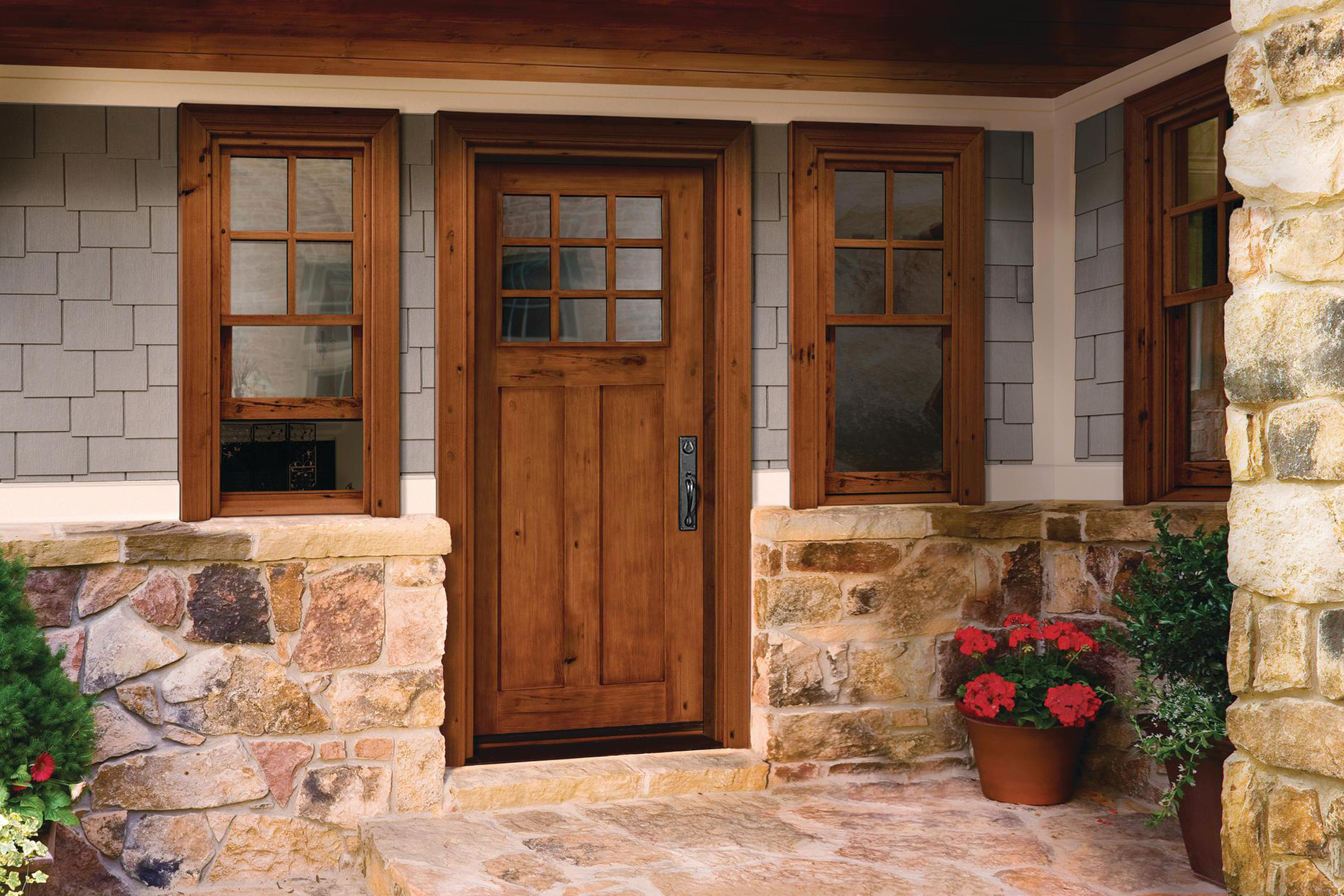
How do I know what size exterior door to buy?
Know the Door Size: Start by measuring the width and height of the existing door slab. Round each number up to the nearest inch to determine the nominal door size you’ll need. For single doors and doors with sidelites, measure only the door slab.
To determine the correct size for a replacement exterior door, follow these steps for accurate measurements. First, measure the width of the existing door at the widest point of the frame, including the trim. Measure from the inside of one jamb to the inside of the opposite jamb. Next, measure the height of the door from the threshold to the top of the jamb, again at the highest point.
When buying a new exterior door, it’s generally recommended to choose a door that’s slightly smaller than the measurements you’ve taken. This provides room for adjustments during installation. Standard exterior door widths are 32, 34, and 36 inches, while heights usually range from 80 to 96 inches.
Ensure the door’s thickness matches your existing frame. Common thicknesses are 1-3/4 inches and 1-3/8 inches. Additionally, consider the swing direction—whether the door will swing inward or outward. This is especially important for doors near walls or in tight spaces.
If you’re unsure about your measurements or are working with non-standard door sizes, consult with a professional before purchasing. Custom or odd-sized doors might require special orders. Proper measurements are crucial for a snug fit, energy efficiency, and security. Remember that accurate measurements reduce the likelihood of having to modify the door or frame during installation.
What is a standard exterior door size?
Standard entry door measurements: Height: 80 inches (6 feet 8 inches) Thickness: 1 3/4 inches. Width: 36 inches standard (30 and 32inches also available)
A standard exterior door size typically ranges from 32 to 36 inches in width and 80 to 96 inches in height. The most common widths are 32, 34, and 36 inches, while heights often vary between 80 and 96 inches, with increments of 2 inches. These dimensions accommodate the majority of residential homes and offer a practical balance between functionality, aesthetics, and standard construction practices.
Choosing the right standard size for your exterior door largely depends on the space available and the architectural design of your home. The 32-inch width is often suitable for smaller entrances, while the 36-inch width provides a more spacious opening for easy movement and furniture transportation.
It’s important to note that while these dimensions are considered standard, homes with unique architectural features or custom designs might necessitate non-standard door sizes. In such cases, custom doors can be ordered to fit specific requirements.
When replacing or installing an exterior door, accurate measurements are crucial to ensuring a proper fit and effective sealing against the elements. If your doorway doesn’t conform to the standard sizes, professional advice should be sought to ensure the best solution for your specific needs.
What is the most common exterior door size?
There are a few different standard sizes for front doors, but the most common is 36 inches wide by 80 inches tall. Some doors can be as narrow as 30 inches and as tall as 96 inches, though, so it’s important to find the exact measurements.
The most common exterior door size is 36 inches in width and 80 inches in height. This size provides a balanced and practical entryway for most residential homes. A 36-inch wide exterior door offers a comfortable entrance for individuals and allows for easy movement of furniture and other large items. The 80-inch height is generally considered standard and accommodates the majority of door frames.
A 36×80 exterior door size is often used as the main entry door for single-family homes, apartments, and many commercial buildings. It strikes a good balance between accommodating foot traffic and maintaining energy efficiency. This size is prevalent due to its versatility and compatibility with standard construction practices.
Remember that proper measurements and installation are essential for a secure, weather-resistant, and aesthetically pleasing exterior door that complements your home’s design and functionality.
What is the minimum width of an exterior door?
32 inches
1008.1.
The minimum width of each door opening shall be sufficient for the occupant load thereof and shall provide a clear width of not less than 32 inches (813 mm).
The minimum width of an exterior door is typically around 30 inches. However, it’s important to note that building codes and accessibility regulations can vary based on location and purpose. In the United States, for example, the Americans with Disabilities Act (ADA) requires that exterior doors in certain buildings, like public accommodations and commercial facilities, have a minimum clear width of 32 inches to allow for wheelchair access.
For residential homes, while a 30-inch wide exterior door might be feasible in some cases, it’s generally recommended to opt for a slightly wider door, such as the common 32-inch width. This provides more comfortable access for individuals and allows for smoother movement of people, furniture, and other large items.
Moreover, local building codes can influence the minimum width of exterior doors, especially in terms of emergency egress requirements. Some codes might mandate wider doors for safety reasons, particularly for main entry and exit points.
How much smaller should an exterior door be than the opening?
Check the door’s fit. Ideally, there should be a gap of about 1/8 inch at the top and along each side, and about 3/8 inch at the bottom. Use cardboard spacers or folded matchbooks (four thicknesses equal about 1/16 inch) along with shims underneath to maintain the spacing.
An exterior door should be around 2 inches smaller in width and 2 inches shorter in height than the opening it’s intended to fit into. This allows for proper installation and adjustments, and ensures a good seal against the elements.
The reason for this 2-inch difference is to provide room for adjustments during installation. Door frames might not be perfectly square or plumb, and the extra space helps accommodate any irregularities in the opening. It also allows for the addition of weatherstripping and other sealing mechanisms to ensure the door is weather-tight.
However, this rule of thumb might vary depending on the specific circumstances and the type of door you’re installing. Some manufacturers and installation guides might recommend slightly different clearances. For example, pre-hung doors, which come with the frame, might have specific instructions regarding the required gap between the door and the frame.
It’s important to follow the manufacturer’s recommendations or consult with professionals when installing an exterior door to ensure the correct sizing and installation. Incorrect clearances could lead to energy loss, poor insulation, and difficulties opening and closing the door. Proper measurements and installation ensure that the door functions well, maintains energy efficiency, and provides security and weather resistance.
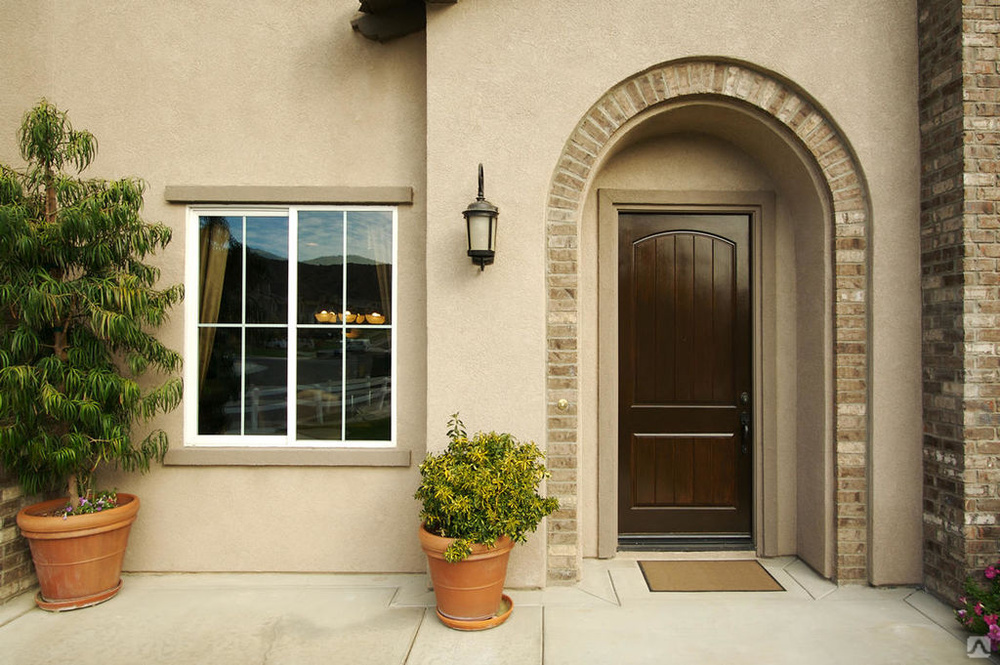
How do I measure the size of an exterior door for replacement?
To accurately measure an exterior door for replacement, follow these steps:
1. Width Measurement: Measure the width of the door frame at three points: the top, middle, and bottom. Use the smallest measurement as the width of your door. Measure from the inside edge of the door jamb or casing.
2. Height Measurement: Measure the height of the door frame on the left and right sides, as well as at the center. Again, use the smallest measurement as the height of the door. Measure from the threshold to the underside of the interior trim.
3. Thickness Measurement: Measure the thickness of the door itself. Common thicknesses are 1-3/4 inches or 1-3/8 inches. Ensure the new door’s thickness matches your existing frame.
4. Rough Opening Size: Measure the width between the studs or the door frame’s rough opening. This gives you an idea of the available space for the door and frame. Ensure it’s larger than the door you intend to install.
5. Check Swing Direction: Determine the door’s swing direction (inward or outward) and whether it’s left- or right-handed. This prevents buying the wrong type of door.
6. Threshold Height: Measure the height of the existing threshold to ensure a smooth transition and proper clearance for the new door.
When purchasing a replacement door, remember to choose a door slightly smaller than your measured dimensions to allow for adjustments during installation. Consult the manufacturer’s guidelines for any specific recommendations regarding clearance and installation. If unsure, seek professional advice to ensure proper sizing and installation.
What measurements are needed for replacing an exterior door?
When replacing an exterior door, several measurements are essential for a successful installation. Start by measuring the width of the door frame at the top, middle, and bottom. Note down the smallest of these measurements, as it indicates the accurate width your new door should be.
Next, measure the height of the door frame on both the left and right sides, as well as at the center. Similar to the width, record the smallest measurement to determine the correct height for your replacement door. Measure from the threshold to the underside of the interior trim, ensuring accuracy.
The thickness of the door is also crucial. Measure the thickness of the existing door to determine whether it’s 1-3/4 inches or 1-3/8 inches. This ensures that your new door matches the existing frame.
Consider if the door opens inward or outward and whether it’s left- or right-handed. This is important to ensure you purchase the appropriate door.
Lastly, measure the height of the existing threshold to maintain a smooth transition and proper clearance for the new door.
After carefully evaluating the width, height, thickness, swing orientation, and threshold height, you can choose a replacement exterior door that fits perfectly, is energy efficient, and improves home security. This method can benefit from consulting expertise if needed.
Any tips for measuring an exterior door accurately for replacement?
When measuring an exterior door for replacement, precision is paramount. Start by measuring the width at multiple points: the top, middle, and bottom of the door frame. Note down the smallest width, as it ensures your new door will fit accurately. Always measure from the inside edges of the door jamb or casing, excluding any trim.
Similarly, measure the height on both sides and the center of the frame. Record the smallest height measurement to guarantee a well-fitting replacement door. Make sure the frame is plumb and level before taking measurements to avoid inaccuracies due to an uneven frame.
This accounts for any adjustments needed during installation, ensuring a snug fit. If you plan to install a door with a different threshold height, remember to consider the thickness of the new flooring material to maintain proper clearance.
Always double-check the swing direction (inward or outward) and the hand orientation (left or right) of the door before making a purchase. This prevents errors in door type selection. Utilize reliable measuring tools such as a tape measure, level, and square to ensure precise measurements.
For comprehensive guidance, consult the manufacturer’s guidelines specific to measuring and installation. If uncertain, seeking advice from a professional installer or carpenter can save you from measurement mishaps and lead to a successful replacement door installation that fits seamlessly and functions optimally.
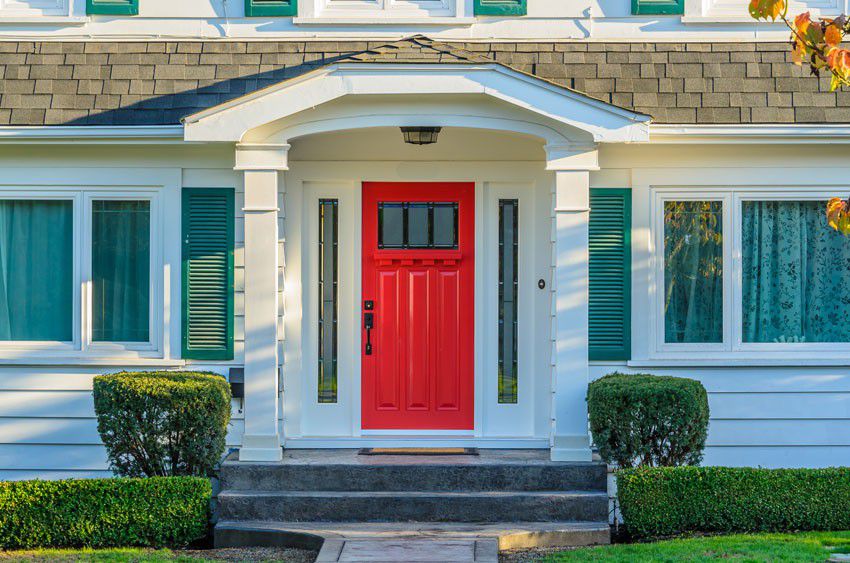
Conclusion
Mastering the art of measuring exterior door sizes for replacement is a vital skill that ensures a successful and efficient door installation process. By meticulously measuring the width, height, and thickness of the door frame and considering aspects like swing direction, hand orientation, and threshold height, you set the stage for a seamless transition to your new door.
Accurate measurements guarantee that the replacement door will fit precisely within the existing frame, providing a snug and weather-resistant seal against the elements. They also contribute to the door’s proper functionality, enabling smooth opening and closing without any hindrances. Additionally, precise measurements play a significant role in maintaining energy efficiency by minimizing gaps that could lead to energy loss.
A well-measured replacement door not only enhances the aesthetics of your home’s exterior but also enhances security and comfort. Properly aligned doors contribute to a well-insulated living space and reduce the likelihood of air leaks, ensuring a comfortable indoor environment.
Ultimately, the process of measuring exterior door size for replacement showcases the importance of attention to detail and planning in home improvement projects. Armed with accurate measurements, you can confidently explore replacement options, make informed decisions, and collaborate effectively with professionals to achieve a door installation that harmonizes seamlessly with your home’s architecture and meets your functional needs. So, whether you’re upgrading for style, efficiency, or security, accurate measurements pave the way for a successful and rewarding door replacement experience.




